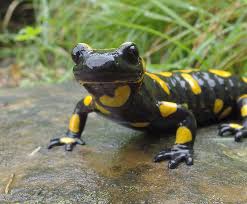Fountain of Youth Discovered and it Has a Tail!
by Robert Haskell
Did you know many salamanders can regenerate not only their limbs and tails but also repair parts of their eyes and brain! This remarkable creature can even re-grow spinal cord tissue in many cases. Such capabilities have not gone unnoticed in the scientific community where the animal is often subjected to numerous inhumane experiments. Dr. Frankenstein would be proud!
Having been around longer than the dinosaurs, salamanders date back 340 million years but requiring osmosis to hydrate their skin makes them especially vulnerable to chemicals in the environment. Particularly disturbing are experiments conducted on these animals. Deliberately severing limbs borders on sadistic and there has to be a more humane way to study the animal.
In the wild, salamanders are often found in temperate areas though some species are capable of weathering harsh winters. New York is home to at least 18 different species of salamanders. Some are aquatic while others prefer woodlands. The average salamander length is roughly 4 to 8 inches (10-20 centimeters) but the Japanese giant salamander has been known to grow almost 6 feet! Being nocturnal, we may not see salamanders often but they are present if you know where to look. During the day, they hide under rocks and logs and seek any damp secluded place to conceal themselves.
As if nature did not threaten this animal enough, habitat loss by humans, chemical runoff and poaching pose significant challenges for the species. Often poached for food and medicinal purposes, salamanders are declining all over the world. Attempts to provide safer road crossing areas in the wild (a major obstacle) and educating the public about the importance of this amazing animal are underway but only time will tell if this will be enough to reverse the rapid decline of many salamander species.